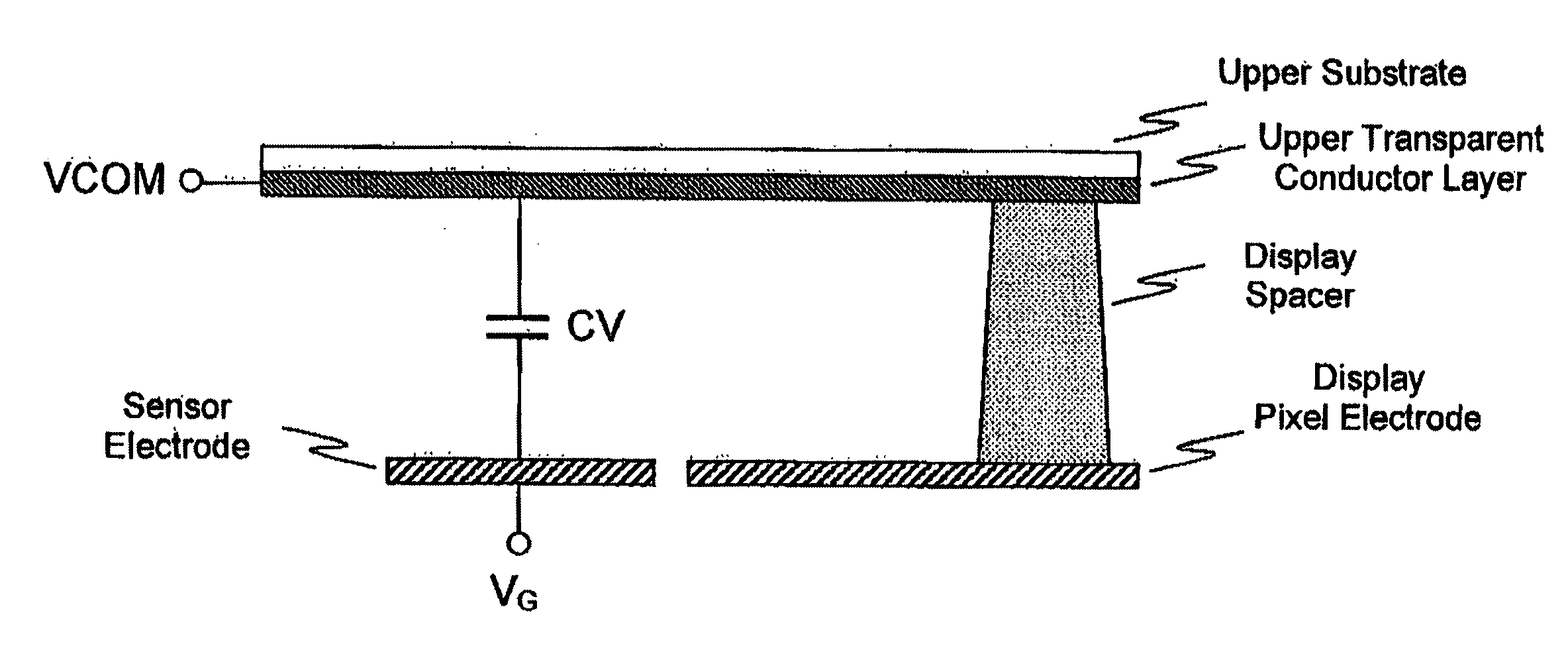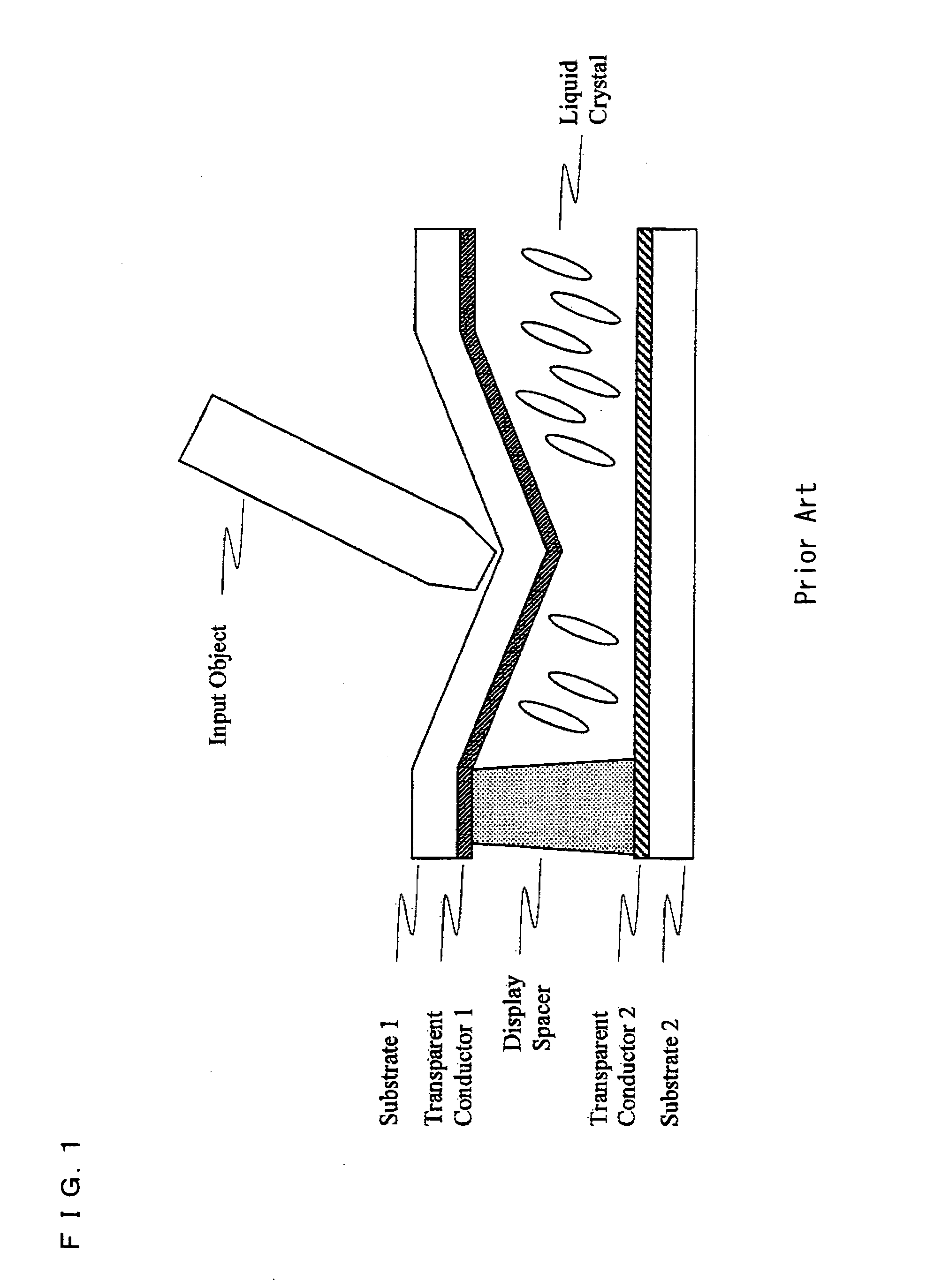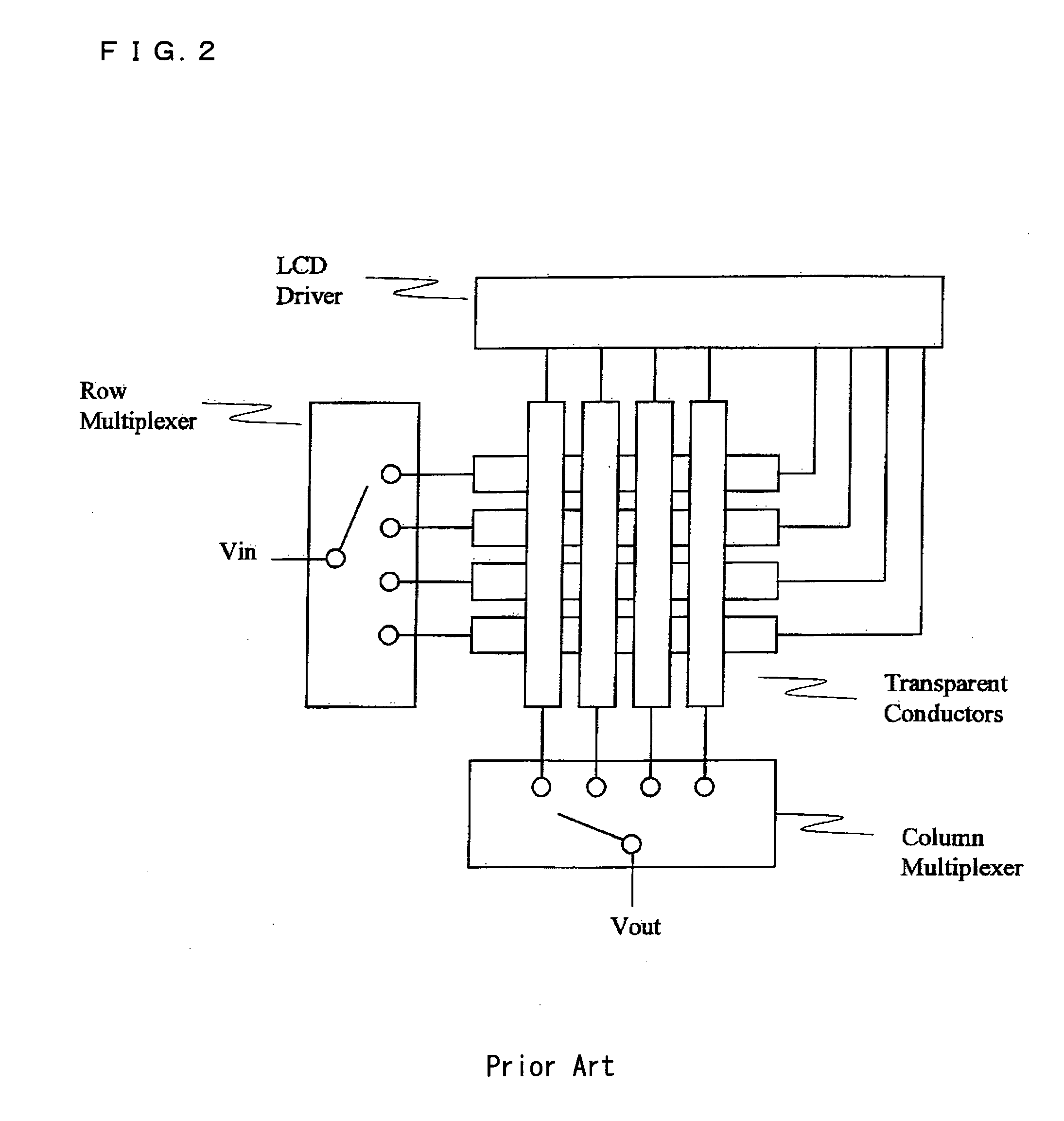Liquid crystal device comprising array of sensor circuits with voltage-dependent capacitor
a capacitance sensor and array technology, applied in the field of liquid crystal devices, can solve the problems of affecting the display quality is affected, and the rows and columns must be used for both display and sensing functions, so as to increase the sensitivity of the capacitance sensor array, increase the sensitivity of the capacitance measurement, and achieve the effect of reducing the mechanical integrity of the display
- Summary
- Abstract
- Description
- Claims
- Application Information
AI Technical Summary
Benefits of technology
Problems solved by technology
Method used
Image
Examples
first embodiment
[0093]This embodiment describes the basic concept whereby a voltage-dependent select capacitor is used to increase the sensitivity of the output of an active pixel sensor circuit to changes in the liquid crystal capacitance.
[0094]This embodiment relates to a liquid crystal device comprising a first array of first sensor circuits. In this embodiment each first sensor circuit is an active pixel sensor circuit. As shown in FIG. 9, the active pixel sensor circuit forming a first sensor circuit of this embodiment comprises a data line, DAT; a power supply line, VDD; a row select line, RWS; an amplifier, M1; a variable liquid crystal capacitor element, CV which functions in use as a liquid crystal sensing capacitor; and a voltage dependent select capacitor, C1. An input of the amplifier is connected to a first terminal of the sensing capacitor.
[0095]A second terminal of the sensing capacitor of each first sensor circuit may be connected to common voltage line VCOM such that the second ter...
second embodiment
[0113]In the second embodiment of this invention, the select capacitor of the first embodiment may be formed by a second metal-oxide-semiconductor field effect transistor (MOSFET), such as a thin-film transistor (TFT). The transistor may be a p-type transistor with the gate terminal connected to the row select line RWS and the source and drain terminal connected together to the gate terminal of the amplifier transistor. This arrangement is shown in FIG. 14 where the transistor M2 forms the voltage-dependent select capacitor.
[0114]In a first state, where the voltage between the gate and source terminals of the transistor M2, VGS, is less than the threshold voltage of the transistor, VT,M2, the transistor is turned on and exhibits a capacitance, C1A, equal to the sum of the gate-drain, gate-source and gate-channel capacitances (CGD,M2, CGS,M2 and CGC,M2 respectively). In a second state, where the voltage between the gate and source terminals of the transistor M2, VGS, is greater than ...
third embodiment
[0116]In the third embodiment of this invention, the select capacitor of the first embodiment may be formed by an n-type transistor. In this circuit, shown in FIG. 15, the gate terminal of the transistor M2 forming the select capacitor is connected to the gate terminal of the amplifier transistor M1 and the source and drain terminals of M2 connected together to the row select line RWS. Again, the transistor exhibits the required voltage-capacitance relationship shown in FIG. 10.
[0117]The operation of this circuit is as described previously for the first and second embodiments.
PUM
 Login to View More
Login to View More Abstract
Description
Claims
Application Information
 Login to View More
Login to View More - R&D
- Intellectual Property
- Life Sciences
- Materials
- Tech Scout
- Unparalleled Data Quality
- Higher Quality Content
- 60% Fewer Hallucinations
Browse by: Latest US Patents, China's latest patents, Technical Efficacy Thesaurus, Application Domain, Technology Topic, Popular Technical Reports.
© 2025 PatSnap. All rights reserved.Legal|Privacy policy|Modern Slavery Act Transparency Statement|Sitemap|About US| Contact US: help@patsnap.com



